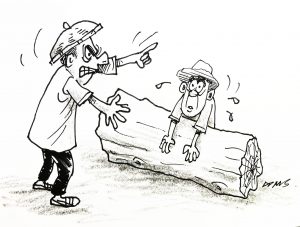Before our local hardwoods totally disappear from the forests, people should be made aware that hardwood trees, which include species like narra, hamurawon, banuyo, gisok, play a crucial role in maintaining biodiversity, sequestering carbon, providing habitat for wildlife, and supporting various industries. There are some strategies for preserving hardwoods.
One is to encourage and enforce sustainable logging practices that include selective harvesting, reforestation, and protection of sensitive ecosystems. Sustainable forestry practices can ensure a steady supply of hardwoods while preserving the long-term health of the forest. There is a need to promote and support forest certification programs. These programs provide guidelines for sustainable forestry practices and help consumers identify wood products from responsibly managed forests.
Since old-growth hardwood forests are valuable ecological habitats that host unique species and store large amounts of carbon, efforts should be made to protect these forests from logging and development. For instance, implement and enforce regulations and zoning laws that govern the logging of hardwoods and the conversion of forested land into other land uses. These regulations should prioritize the conservation of hardwood resources and forests.
Promote the preservation of biodiversity in hardwood forests by protecting and maintaining a variety of tree species, including rare and threatened species. Biodiversity is crucial for ecological resilience. Or else, protect hardwood forests for the sake of wildlife conservation. Many species, including birds, mammals, and insects, depend on these forests for food and habitat. Public awareness then about the importance of hardwood forests and the need for their preservation should be raised.
Engaging local communities and stakeholders can lead to greater support for conservation efforts. Invest in research and monitoring to better understand the health and dynamics of hardwood forests. This information can inform conservation strategies and management decisions. Provide incentives for landowners and organizations to conserve hardwood forests through tax benefits, grants, and other financial mechanisms. Through these, we can ensure the continued availability of hardwood resources and maintain the ecological and economic benefits they provide.




